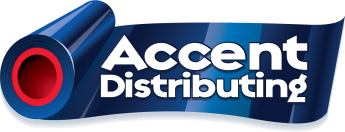Your website should be one of your most valuable marketing tools. It is the central hub of information
about your company and the services that you offer.
But owning a website also means maintaining the site to ensure search engine optimization, or SEO. SEO is the process of improving the quality and quantity of website traffic to a site from search engines. After all, you want to make sure that Google is pulling up, known as SERP (search engine result page), your company during search results when someone in your market is seeking information about window tinting or decorative finishes.
SEO efforts can be broken into two parts – on-page SEO and off-page SEO. Here is a look at the on-page SEO strategy and why it matters.
What is On-Page SEO?
On-page SEO refers to best practices that web content creators and sight owners can follow to ensure their content is as easily discoverable as possible.
This includes setting up detailed metadata (page title and meta description) for each page; using key search terms (or keywords) within the copy, headlines and subheadings; offering website security; using clean HTML code and more.
As you can see, each of these elements have to do with the website itself. Alternatively, off-page SEO tactics, deal with efforts outside of the website to bring attention to your site.
How Can I Improve On-Page SEO?
In some cases, on-page SEO is the easiest of the two SEO strategies to work on. This is because everything is truly under your control. Afterall, you control the content of your own website.
Here’s a deeper look at some of those things that you can do to improve your SEO performance (on-page SEO tactics):
Relevant Content
When someone is searching for information on Google, such as “adding security film to my home’s windows,” they want content relevant to their search. Offer content on your website that provides information to your potential customers about what they are searching for.
In the example above, offer a page that is dedicated to 3M™ Safety & Security Film. Avoid mixing messages about sun control films and decorative finishes on the same page. Rather, keep your message focused.
Add resources, including videos, case studies, testimonies and downloadable brochures about security film to the page. The more information that you can provide that is relevant to the user’s search, the better the page will perform. This is because Google will know that people have landed on the page, stayed on the page for a while and interacted with the content (clicked on links). This allows Google to understand that your page is a good resource for people – thus it will continue to rank high in similar searches.
Meta Descriptions
Each page of your website should have a meta description. This is the description that Google uses when it pulls your website during a search. Meta descriptions are a couple of sentences that users can read to determine if your page provides the information that they are seeking.
Make sure that your meta description accurately provides information about what is on the page. For example, in a search “adding security film to my home’s windows,” a meta description that mentions 3M™ Safety and Security Film will likely convince someone to click on the link.
Avoid using the same meta description for every page of your website. Each page of your site should be about something specific.
Also, make sure that your meta description adequately addresses the content that is on the page. Google will know that a meta description is not correct based on the amount of time users spend on the page (high bounce rate), if the description doesn’t include similar phrases that are found on the page itself, and if there aren’t relevant search terms included.
Key Search Terms (or Keywords)
High performing keywords, or search terms, are an important ingredient in on-page SEO efforts. Keywords should be sprinkled throughout the content of every page, including in the headlines, body, meta descriptions, names of photographs and more.
So what are the popular key search terms? There are tools to assist with this, including free options:
- Keyword Tool
- Google Keyword Planner through Google Ads
- Google Trends
Each of the tools can give you insights into the phrases, search volume and cost per click (which is useful if you decide to run pay-per-click ads).
Title Tags and Alt Text
Page content extends beyond just paragraphs and written word. It includes your headlines, graphics, images and more. Both title tags and alt text are part of your page content.
A title tag is the name, or title, of the page. The primary title of the page should include a top key search term and be limited to 65 characters or less. Be sure your title is relevant to the content of the page.
Meanwhile, alt text refers to the names you give images or graphics on the page. Google’s website crawlers can’t “see” images, but they can read text. Be descriptive when identifying or naming photos. This helps Google understand the content of the photos. Search terms also can be used within the alt text to assist with on-page SEO strategy.
Website Security/SSL Certificate
Search browsers take website security very seriously. If a site isn’t secure, it is deemed unsafe and users are often immediately notified. Some of these warning signs can be scary enough to deter visitors from ever visiting your page. Google will not display a site at the top of a search if the site is lacking in security measures. Be sure to maintain a Secure Sockets Layer (or SSL) certificate for your website. Your website developer should be able to assist with this.
Website Structure
The structure of a website relates to how easy it is to navigate from page-to-page. URLs should contain relevant key search terms and be short. Don’t use redundant words within a URL.
Internal Links
Be sure to include links to other pages on your site when building content. This helps Google crawlers easily jump from page-to-page and shows Google that there is a lot for a user to learn if they are on your website. Internal links also can keep visitors engaged on your website longer (and help bring them further into the sales funnel).
Page Performance
How a page performs also impacts search results. Pages with slow load speeds or that don’t appear correctly on a mobile phone are less likely to rank high in search results. This is because users can get frustrated and leave – which increases the bounce rate.
It is important to consider the image file sizes, reduce redirects and minimize CSS/Javascript issues.
Mobile Friendly
In today’s digital landscape, it is very important to have a mobile friendly website. More consumers are visiting sites from their mobile phones than they are their PCs. In fact, Google now uses the mobile version of websites for ranking and indexing purposes.
These are just some, not all, of the tactics you can do to improve your on-page SEO.
How can I tell if my site is performing?
There are tools in the industry that can assist you with on-page SEO efforts. The Search Engine Journal offers a list of 109 SEO Tools that can help you manage your website. Moz, SEMRush and WooRank are paid options designed to help you monitor your site’s performance.
Have questions? Accent Distributing can put you in touch with a full-service marketing firm for you to ask questions. For more information, contact Inside Sales at [email protected] or at (941) 922-5268.




